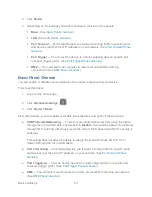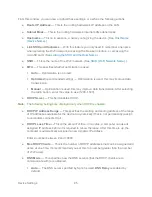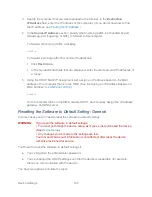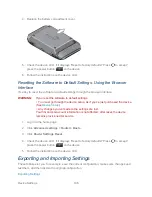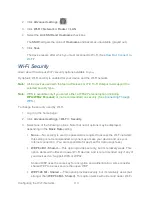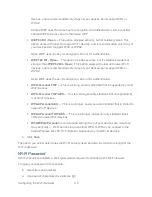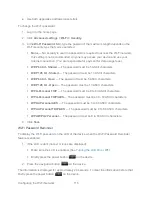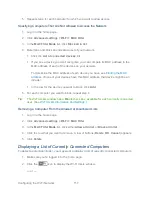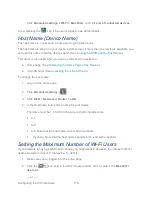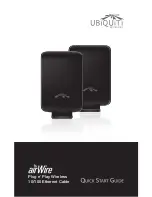
Device Settings
104
3. Specify the computer that you want exposed to the Internet: in the
Destination
IP Address
field, enter the IP address of the computer. (If you don’t know how to find
the IP address, see
Finding the IP Address
.)
4. In the
Source IP Address
section, specify what incoming traffic (not handled by port
forwarding, port triggering, or NAT) to forward to this computer.
To forward all incoming traffic, click
Any
.
— or —
To forward incoming traffic from certain IP addresses:
Click
Restriction
.
In the two additional fields that are displayed, enter the start and end IP addresses of
a range.
5. Using the DHCP Static IP Assignment List, assign an IP address based on the MAC
address of the computer that is in the DMZ. (See “Assigning an IP Address Based on a
MAC Address” in
LAN Panel: DHCP
.)
— or —
On the computer that is in the DMZ, disable DHCP, and manually assign the IP address,
gateway, and DNS server.
Resetting the Software to Default Setting: General
In some cases you will need to reset the software to default settings.
WARNING:
If you reset the software to default settings:
• You must go through the device setup, as if you've just purchased the device.
(See
Device Setup
.)
• Any changes you’ve made to the settings are lost.
Your 3G and 4G account information is not affected; after reset, the device
remains provisioned for service.
You’ll need to reset the software to default settings if:
● You’ve forgotten the administrator password.
● You’ve changed the DHCP settings such that the device is inoperable (for example,
there’s no communication with the device).
You have two options to initiate the reset:




